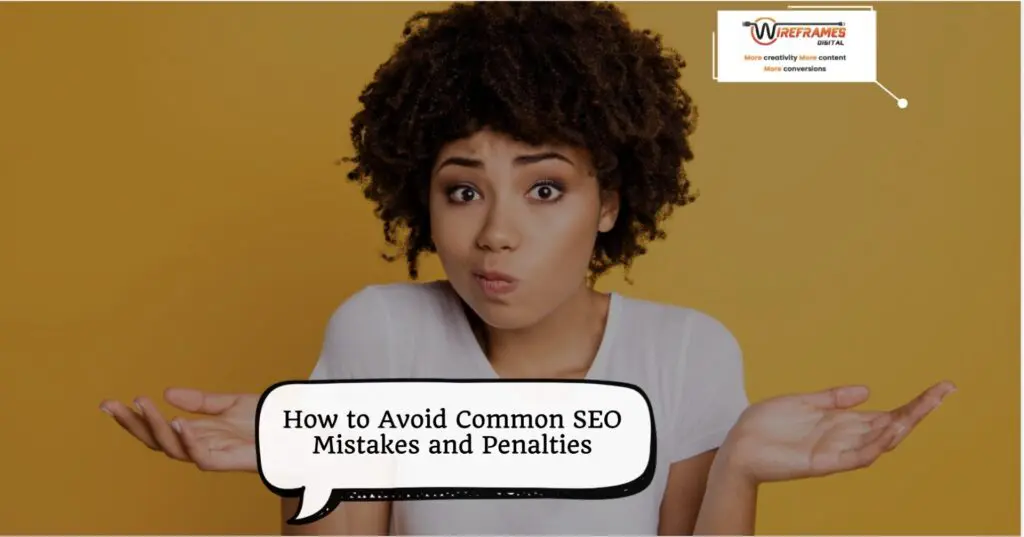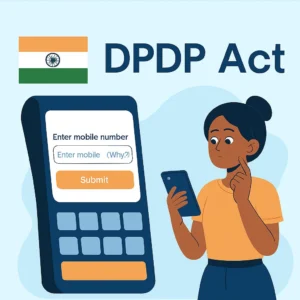SEO, or search engine optimization, is the process of improving your website’s visibility and relevance for your target keywords and audience. SEO can help you drive more organic traffic, leads, and conversions to your website, as well as enhance your brand awareness and reputation.
However, SEO is not a one-time thing. It requires constant monitoring, analysis, and optimization to keep up with the changing algorithms, trends, and user behavior. If you neglect or violate some of the SEO best practices, you may end up making some common SEO mistakes that can hurt your website’s performance and even result in penalties from Google.
In this post, we will discuss some of the most common SEO mistakes and penalties that you should avoid, and how to fix them if you have already made them. Let’s get started!
Common SEO Mistakes and How to Fix Them
According to Ahrefs, a leading SEO tool, there are 10 common SEO mistakes that many website owners and marketers make, and how to avoid them:
1. Not Doing Keyword Research
Keyword research is the foundation of any SEO strategy. It helps you understand what your potential customers are searching for, what their intent and needs are, and how you can provide them with the best solutions. Keyword research also helps you identify the most relevant and profitable keywords for your website, as well as the level of competition and difficulty for ranking for them.
If you don’t do keyword research, you may end up targeting the wrong keywords, or missing out on some valuable opportunities. You may also waste your time and resources on optimizing your website for keywords that are too broad, too specific, or too competitive.
To avoid this mistake, you should use a keyword research tool like Ahrefs Keywords Explorer, Semrush Keyword Magic Tool, or Google Keyword Planner to find and analyze the best keywords for your website. You should also consider the following factors when choosing your keywords:
- Search volume: The number of times a keyword is searched for in a given period. You should aim for keywords that have a decent search volume, but not too high that they are too competitive or too low that they are not worth targeting.
- Keyword difficulty: The level of competition and effort required to rank for a keyword. You should aim for keywords that have a low to medium keyword difficulty, depending on your website’s authority and resources.
- Search intent: The goal or purpose behind a user’s search query. You should aim for keywords that match the search intent of your target audience, and create content that fulfills their needs and expectations.
- Relevance: The degree of connection or suitability of a keyword to your website, niche, and goals. You should aim for keywords that are highly relevant to your website, and avoid keywords that are irrelevant, misleading, or off-topic.
2. Not Matching Search Intent
Search intent, as mentioned above, is the goal or purpose behind a user’s search query. It can be classified into four main types:
- Informational: The user wants to learn more about a topic, problem, or question. For example, “how to avoid common SEO mistakes”.
- Navigational: The user wants to find a specific website, page, or resource. For example, “Ahrefs blog”.
- Transactional: The user wants to buy a product, service, or solution. For example, “Ahrefs subscription”.
- Commercial: The user wants to compare or evaluate different options before making a purchase decision. For example, “Ahrefs vs Semrush”.
Matching search intent is crucial for SEO, as it helps you create content that satisfies the user’s needs and expectations, and increases the chances of ranking higher and converting better. If you don’t match search intent, you may end up creating content that is irrelevant, incomplete, or unappealing to the user, and lose their trust and interest.
To avoid this mistake, you should use a tool like Ahrefs SERP Checker, Semrush SERP Analysis, or Google Search Console to analyze the search results for your target keywords, and understand the type and format of content that Google and users prefer. You should also consider the following factors when creating your content:
- Content type: The form or medium of your content, such as blog post, video, infographic, ebook, etc. You should choose the content type that best suits your keyword, audience, and goal.
- Content format: The structure or layout of your content, such as list, guide, review, comparison, etc. You should choose the content format that best delivers your message, value, and solution.
- Content angle: The perspective or approach of your content, such as how-to, why, what, etc. You should choose the content angle that best captures the user’s attention, curiosity, and emotion.
3. Targeting Keywords That Are Too Difficult
Keyword difficulty, as mentioned above, is the level of competition and effort required to rank for a keyword. It is usually measured by a score or a percentage, based on various factors, such as the number and quality of backlinks, the domain authority and page authority, the content relevance and quality, and the user signals of the ranking pages.
Targeting keywords that are too difficult is a common SEO mistake that can result in frustration, disappointment, and wasted resources. If you target keywords that are too difficult, you may end up competing with websites that have more authority, popularity, and trust than yours, and never reach the top positions or get any traffic.
To avoid this mistake, you should use a tool like Ahrefs Keyword Difficulty, Semrush Keyword Difficulty, or Moz Keyword Difficulty to estimate the difficulty of your target keywords, and compare them with your website’s authority and resources. You should also consider the following factors when choosing your keywords:
- Your website’s domain rating or domain authority: The measure of your website’s overall authority and trustworthiness, based on the number and quality of backlinks. You should aim for keywords that have a lower or similar keyword difficulty score than your website’s domain rating or domain authority score.
- Your website’s page rating or page authority: The measure of your website’s individual page’s authority and trustworthiness, based on the number and quality of backlinks. You should aim for keywords that have a lower or similar keyword difficulty score than your website’s page rating or page authority score.
- Your website’s content quality and relevance: The measure of your website’s content’s quality and relevance to your target keywords, based on the content length, depth, freshness, uniqueness, and optimization. You should aim for keywords that have a lower or similar content quality and relevance score than your website’s content quality and relevance score.
4. Not Building Enough Backlinks
Backlinks, or inbound links, are links from other websites that point to your website. Backlinks are one of the most important ranking factors for SEO, as they signal to Google and users that your website is authoritative, trustworthy, and valuable. Backlinks can help you improve your website’s visibility, traffic, and conversions, as well as enhance your brand awareness and reputation.
Not building enough backlinks is a common SEO mistake that can limit your website’s potential and growth. If you don’t build enough backlinks, you may end up missing out on some valuable opportunities to increase your website’s authority, popularity, and trust, and rank higher for your target keywords.
To avoid this mistake, you should use a tool like Ahrefs Backlink Checker, Semrush Backlink Analytics, or Moz Link Explorer to analyze your website’s backlink profile, and identify the number, quality, and diversity of your backlinks. You should also consider the following factors when building your backlinks:
- Link quality: The measure of the authority, trustworthiness, and relevance of the linking website and page, based on the number and quality of backlinks, the domain authority and page authority, the content relevance and quality, and the user signals. You should aim for backlinks from high-quality websites and pages that are relevant to your niche, topic, and goal.
- Link quantity: The measure of the number of backlinks that your website has, from different websites and pages. You should aim for a sufficient number of backlinks that can help you improve your website’s authority, popularity, and trust, and rank higher for your target keywords.
- Link diversity: The measure of the variety and balance of your backlinks, from different types, sources, and locations. You should aim for a diverse and natural backlink profile that can help you avoid any penalties or suspicions from Google, and increase your website’s credibility and resilience.
5. Breaking Google’s Terms of Service When Building Links
Building links, as mentioned above, is one of the most important and effective SEO strategies, but it also comes with some rules and guidelines that you should follow. Google has a set of terms of service that outline the dos and don’ts of link building, and what constitutes a good or bad link. Google also has a set of penalties that it can impose on websites that violate its terms of service, and harm its search quality and user experience.
Breaking Google’s terms of service when building links is a common SEO mistake that can result in severe consequences, such as losing your rankings, traffic, and conversions, or even getting your website de-indexed or banned from Google. Some of the link building practices that Google considers as violations of its terms of service are:
- Buying or selling links: Exchanging money or goods for links
- Participating in link schemes: Creating or joining networks of websites that link to each other for the sole purpose of manipulating rankings
- Using unnatural or spammy anchor text: Using over-optimized or irrelevant keywords or phrases as the clickable text of a link
- Creating low-quality or irrelevant links: Getting links from websites that have low authority, trust, or relevance, or that are unrelated to your niche, topic, or goal
- Building links too fast or too slow: Creating or losing links at an unnatural or inconsistent pace that may raise suspicion or alarm from Google
To avoid this mistake, you should use a tool like Google Search Console, Ahrefs Disavow Tool, or Semrush Disavow Tool to monitor and manage your website’s backlink profile, and identify and remove any bad or toxic links that may harm your website’s performance or reputation. You should also follow Google’s guidelines and best practices when building links, and focus on quality, relevance, and diversity over quantity, speed, and manipulation.
6. Missing Internal Link Opportunities
Internal links, or links that point from one page to another within the same website, are another important ranking factor for SEO, as they help Google and users navigate and understand your website’s structure, hierarchy, and content. Internal links can help you improve your website’s usability, crawlability, and indexability, as well as distribute your website’s authority, popularity, and trust among your pages.
Missing internal link opportunities is a common SEO mistake that can limit your website’s potential and growth. If you don’t create enough internal links, you may end up creating orphan pages, or pages that have no links pointing to them, which can be difficult for Google and users to find and access. You may also miss out on some valuable opportunities to boost your website’s relevance, authority, and ranking for your target keywords.
To avoid this mistake, you should use a tool like Ahrefs Site Audit, Semrush Site Audit, or Screaming Frog to analyze your website’s internal link structure, and identify and fix any issues, such as broken links, redirect chains, or orphan pages. You should also consider the following factors when creating your internal links:
- Link relevance: The degree of connection or suitability of the linking page and the linked page, based on the content topic, keyword, and goal. You should create internal links between pages that are relevant to each other, and avoid internal links that are irrelevant, misleading, or off-topic.
- Link anchor text: The clickable text of the link, which should describe the content of the linked page, and include the target keyword or a variation of it. You should use descriptive and natural anchor text for your internal links, and avoid over-optimized or generic anchor text, such as “click here” or “read more”.
- Link placement: The location or position of the link within the page, which should be visible and accessible to the user, and not hidden or buried. You should place your internal links in prominent and strategic places within your page, such as the content body, the navigation menu, the sidebar, or the footer.
7. Not Letting Google Crawl Your Content
Google crawls, or scans, your website’s content to discover and index new or updated pages, and to understand what your website is about and how it can serve the user’s queries. Google uses a software program called Googlebot, or a crawler or a spider, to crawl your website’s content, and to follow the links on your website to other websites.
Not letting Google crawl your content is a common SEO mistake that can prevent your website from being indexed and ranked by Google, and from getting any organic traffic or conversions. If you don’t let Google crawl your content, you may end up having your website or pages ignored, excluded, or penalized by Google.
To avoid this mistake, you should use a tool like Google Search Console, Ahrefs Site Audit, or Semrush Site Audit to monitor and manage your website’s crawlability and indexability, and identify and fix any issues, such as crawl errors, blocked resources, or noindex tags. You should also consider the following factors when letting Google crawl your content:
- Robots.txt file: A text file that tells Googlebot which pages or files on your website it can or cannot crawl. You should use the robots.txt file to allow Googlebot to crawl your important and relevant pages or files, and to disallow Googlebot to crawl your unimportant or irrelevant pages or files, such as admin pages, duplicate pages, or media files.
- XML sitemap: A file that lists all the pages or files on your website that you want Google to crawl and index, and provides additional information, such as the last modified date, the priority, and the frequency of each page or file. You should use the XML sitemap to help Googlebot find and crawl your important and relevant pages or files, and to submit it to Google Search Console for faster and easier indexing.
- Meta robots tag: A HTML tag that tells Googlebot how to crawl and index a specific page or file on your website, and provides instructions, such as index, noindex, follow, nofollow, etc. You should use the meta robots tag to control Googlebot’s behavior on a page or file level, and to avoid any conflicts or contradictions with the robots.txt file or the XML sitemap.
8. Not Optimizing Your Content for Featured Snippets and Voice Search
Featured snippets, or answer boxes, are special blocks of information that appear at the top of the search results, and provide a quick and direct answer to the user’s query, along with a link to the source website. Featured snippets can help you increase your website’s visibility, traffic, and conversions, as well as enhance your brand awareness and authority.
Voice search, or voice-enabled search, is the process of using voice commands to search for information on the internet, using devices such as smartphones, smart speakers, or laptops. Voice search can help you reach more users, especially those who prefer convenience, speed, or accessibility, and cater to their needs and expectations.
Not optimizing your content for featured snippets and voice search is a common SEO mistake that can make you lose some valuable opportunities to rank higher and attract more users. If you don’t optimize your content for featured snippets and voice search, you may end up being outranked or overlooked by your competitors, who are more prepared and proactive.
To avoid this mistake, you should use a tool like Ahrefs Keywords Explorer, Semrush Keyword Magic Tool, or Google Search Console to find and analyze the keywords and queries that trigger featured snippets and voice search, and understand the type and format of content that Google and users prefer. You should also consider the following factors when creating your content:
- Content type: The form or medium of your content, such as text, image, video, table, list, etc. You should choose the content type that best suits your keyword, audience, and goal, and that matches the content type of the featured snippet or voice search result.
- Content format: The structure or layout of your content, such as question and answer, how-to, why, what, etc. You should choose the content format that best delivers your message, value, and solution, and that matches the content format of the featured snippet or voice search result.
- Content length: The amount or size of your content, in terms of words, characters, or pixels. You should choose the content length that best covers your topic, keyword, and goal, and that matches the content length of the featured snippet or voice search result.
9. Not Measuring and Improving Your SEO Performance
SEO performance, or SEO results, is the measure of how well your website is performing in terms of SEO, based on various metrics, such as rankings, traffic, conversions, revenue, etc. SEO performance can help you evaluate your website’s strengths and weaknesses, as well as the opportunities and threats in your niche.
Not measuring and improving your SEO performance is a common SEO mistake that can hinder your website’s growth and success. If you don’t measure and improve your SEO performance, you may end up wasting your time and resources on ineffective or outdated SEO strategies, or missing out on some valuable insights and feedback that can help you optimize your website for SEO.
To avoid this mistake, you should use a tool like Google Analytics, Ahrefs Site Explorer, or Semrush Position Tracking to track and analyze your website’s SEO performance, and identify the metrics and KPIs that matter to your website, niche, and goal. You should also consider the following factors when measuring and improving your SEO performance:
- SEO goals: The specific, measurable, achievable, relevant, and time-bound objectives that you want to achieve with your SEO efforts, such as increasing your rankings, traffic, conversions, revenue, etc. You should set and align your SEO goals with your website, niche, and goal, and use them to guide and evaluate your SEO performance.
- SEO strategy: The plan or approach that you use to achieve your SEO goals, such as keyword research, content creation, link building, technical SEO, etc. You should create and implement your SEO strategy based on your SEO goals, and use it to execute and optimize your SEO performance.
- SEO action plan: The steps or tasks that you take to execute your SEO strategy, such as conducting an SEO audit, optimizing your content, building backlinks, etc.
10. Not Optimizing Your Content for Semantic Search
Semantic search, or meaning-based search, is the process of understanding the context and intent behind a user’s query, and providing the most relevant and comprehensive results, rather than just matching keywords. Semantic search can help you reach more users, especially those who use natural language, long-tail, or conversational queries, and cater to their needs and expectations.
Not optimizing your content for semantic search is a common SEO mistake that can make you lose some valuable opportunities to rank higher and attract more users. If you don’t optimize your content for semantic search, you may end up creating content that is too narrow, too shallow, or too generic, and that fails to address the user’s query, problem, or goal.
To avoid this mistake, you should use a tool like Ahrefs Keywords Explorer, Semrush Topic Research, or Google Trends to find and analyze the topics and subtopics that are related to your target keywords, and understand the user’s intent, needs, and expectations. You should also consider the following factors when creating your content:
- Content depth: The level of detail or coverage of your content, in terms of the number and quality of subtopics, facts, examples, etc. You should create content that is deep enough to answer the user’s query, problem, or goal, and that covers all the relevant and important subtopics, facts, examples, etc.
- Content breadth: The level of diversity or variety of your content, in terms of the number and quality of synonyms, variations, or related keywords. You should create content that is broad enough to match the user’s query, problem, or goal, and that includes all the relevant and important synonyms, variations, or related keywords.
- Content optimization: The level of alignment or suitability of your content, in terms of the title, meta description, headings, images, etc. You should create content that is optimized for semantic search, and that uses the title, meta description, headings, images, etc. to describe and summarize your content, and to include your target keywords and their synonyms, variations, or related keywords.
Conclusion
SEO is a complex and dynamic process that requires constant monitoring, analysis, and optimization to keep up with the changing algorithms, trends, and user behavior. However, by avoiding some of the common SEO mistakes and penalties that we discussed in this post, you can improve your website’s performance, traffic, and conversions, and achieve your SEO goals and grow your business.
We hope you found this post helpful and informative. If you have any questions or comments, please feel free to leave them below. And if you need any help with your SEO audit or any other SEO services, please contact us today. We are here to help you succeed online!
















